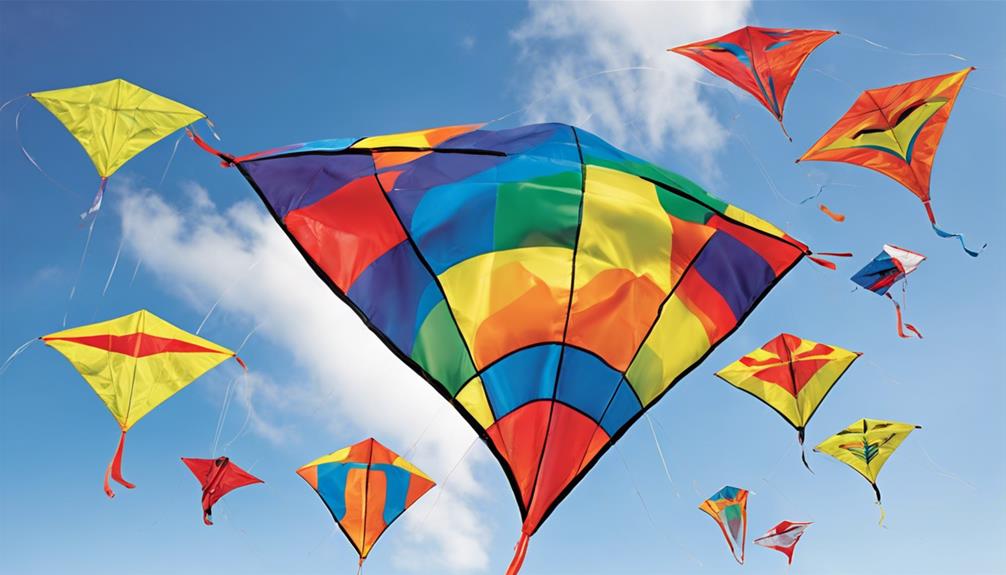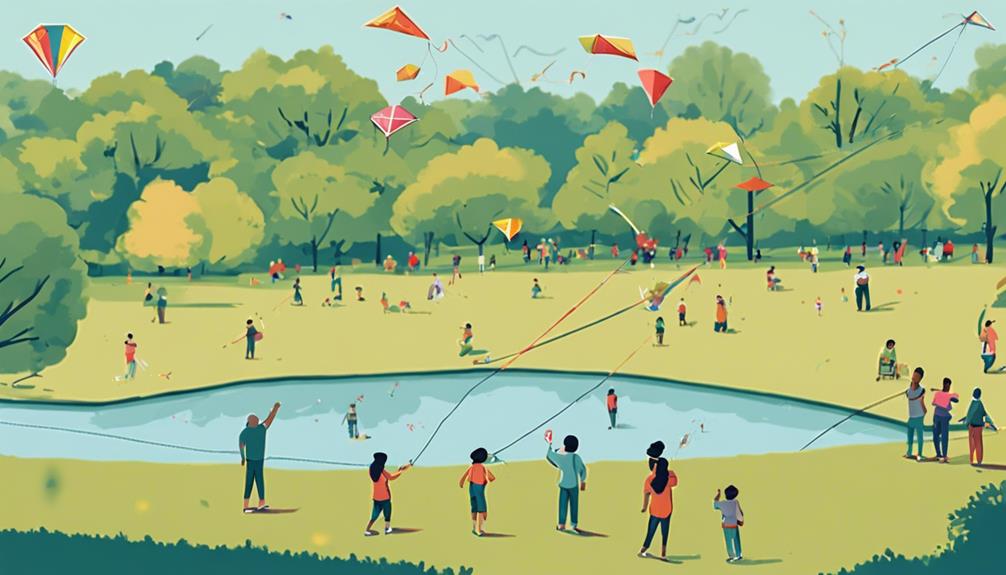Imagine you’re flying your kite in a bustling park, and suddenly it veers toward a group of unsuspecting picnickers. This scenario underscores the importance of selecting the right location, which is just the tip of the iceberg when it comes to kite flying safety.
By paying attention to where and how you fly, you’re not just ensuring your safety, but also that of those around you. But what about unexpected weather changes or the right kind of equipment?
Let’s explore how you can navigate these challenges and more, ensuring your kite flying experience is as safe as it is enjoyable.
Contents
Choosing the Right Location

Selecting the right location is crucial for safe kite flying, ensuring open spaces away from hazards like power lines and buildings. When you decide to fly a kite, choosing an open area with enough clearance above and around is key to avoiding entanglement. It’s vital to pick locations with minimal foot traffic and free from obstructions for safe takeoff and landing.
Steer clear of airports, roads, or highways to prevent interference and potential hazards. Always check the wind direction and nearby hazards to optimize safety. Keeping a safe distance from power lines and ensuring the area is suited for flying can significantly reduce the risk of accidents. By following these guidelines, you’ll enjoy a safe and enjoyable kite flying experience.
Understanding Wind Conditions
After considering the right location for kite flying, it’s also crucial to understand wind conditions to ensure your kite performs optimally. Recognizing the right wind conditions can make or break your kite flying experience.
Here’s what you need to know:
- The ideal wind speed for kite flying is between 8-15 mph for optimal performance.
- Avoid gusty winds as they can cause instability and make controlling your kite difficult.
- Choose open areas with steady wind flow for a smooth flying experience.
- Steer clear of obstructions like trees or buildings that can disrupt wind flow.
- Tailless kites are great for light winds, while kites with additional features perform better in heavy winds.
Selecting Your Kite Carefully

When choosing your kite, it’s crucial to focus on materials that ensure both durability and safety for an optimal flying experience. Opt for kites made of wood or plastic, as these materials offer the strength needed to withstand various wind conditions while ensuring your safety.
For the tail, cloth is your best bet to prevent accidents, enhancing the stability and control of your kite in the air. It’s essential to select a kite with a string made of cotton, linen, or nylon. These materials provide better control, allowing you to fly your kite with confidence.
Avoid metallic thread or metal-reinforced string at all costs to prevent fire hazards. By prioritizing safety and choosing the right materials, you’ll significantly enhance your flying experience.
Essential Flying Techniques

Having selected a kite with safety in mind, it’s crucial to master essential flying techniques for an optimal experience. By honing these skills, you’ll ensure both smoother flying and heightened enjoyment. Here are key techniques to remember:
- Adjust the tow point on the bridle or change the kite’s dihedral to correct common flight problems.
- Implement drag adjustment for smoother flying experiences.
- Identify and correct flying height issues to maintain stability and control.
- Follow specific steps for single or multi-line flying to enhance stability control.
- Handle tangles carefully to prevent line breakage and ensure safety.
Maintaining Safety Awareness

Before you send your kite soaring, it’s critical to stay vigilant about your environment and potential dangers to ensure a safe flying experience. Always be aware of your surroundings and avoid flying kites near power lines, buildings, or crowded areas to prevent accidents.
Heed weather forecasts, steering clear of strong winds or thunderstorms which can transform kite flying from fun to hazardous. Teaching children about kite safety and emergency procedures is essential for their well-being. Moreover, carrying necessary safety equipment like gloves and first aid kits can make a significant difference in case of emergencies.
Ensuring you’re prepared for potential hazards keeps kite flying enjoyable and safe for everyone involved.
Conclusion
In conclusion, always prioritize your safety and those around you when flying kites. Choose open, obstacle-free areas away from power lines and airports.
Understand the day’s wind conditions and select a kite that matches your skill level. Master the essential flying techniques and maintain constant safety awareness, especially with changing weather.
By adhering to these guidelines, you’ll ensure a fun and safe kite-flying experience. Remember, preparation and caution are key to avoiding accidents and enjoying your time outdoors.





